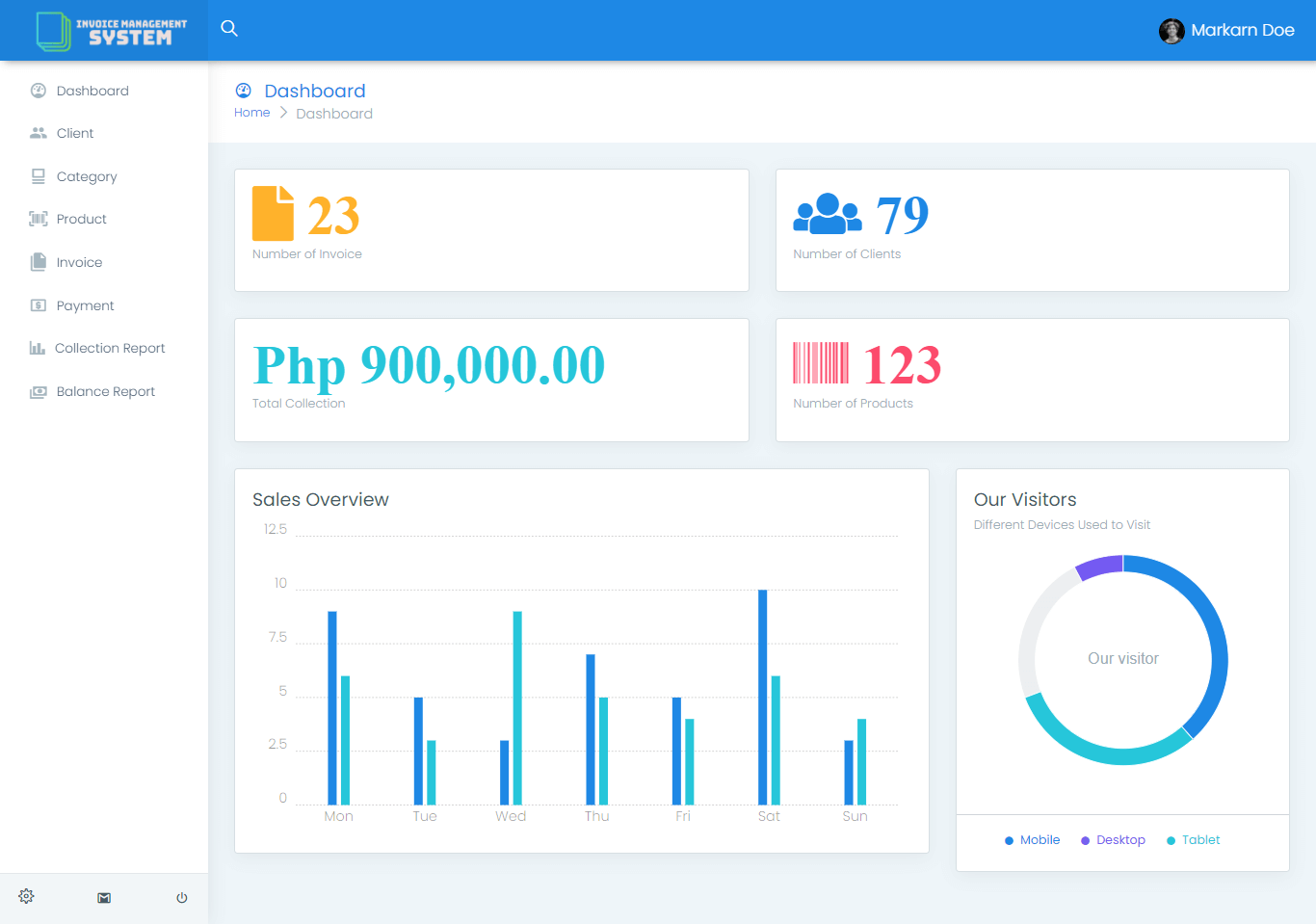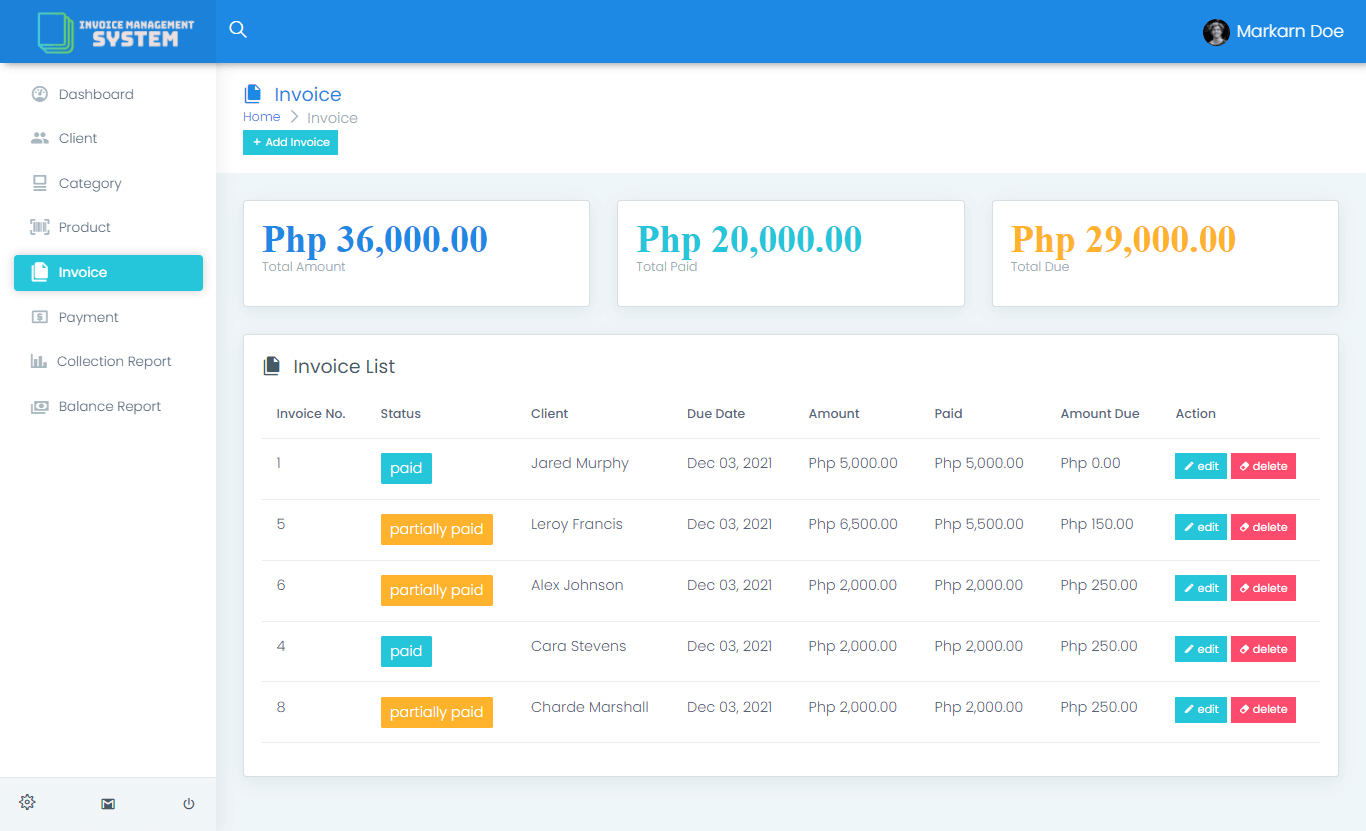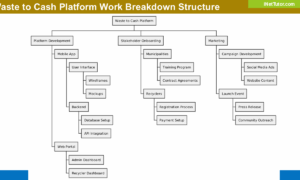Invoice Management System Database Design
About the System
Table of Contents
Technology is highly used for business operations and transactions automation. The capstone project, entitled “Invoice Management System” is designed to automate the management of the company’s invoice records. The said project will help companies to have an organized, accurate, and reliable record that will help them track their sales and finances.
A company’s invoice record is legal proof of the company’s rendered services and the payment client owed to the company. Many businesses currently manage their financial activities especially invoice records using a manually-assisted approach. The manual recording approach is prone to human mistakes and will not allow the organization to assess its financial status efficiently. Human errors, particularly in the manual calculation of digits, may cause records of expenses and invoices to be inaccurate and unreliable. In the preparation of timely financial reports, the manual procedure is regarded to be inefficient and unsuccessful. Organizations require an automated solution to help them handle their financial activities more efficiently.

Some of the benefits of utilizing an invoice management system are as follows:
- increased correctness of records
- enhanced tracking of payments and outstanding invoices
- increased efficiency of operations
- as invoices are paid more rapidly, there is an improvement in cash flow.
- better customer service due to the fact that invoice-related questions can be resolved more rapidly
The following are some of the features of an invoicing management system:
- invoice creation, management, and printing capabilities
- ability to track payments and outstanding invoices
- capability of producing reports on system activity
- capability of adding notes or comments to invoices
- online payment processing through various financial institutions
- compatibility with third-party business systems, such as ERP
Database Tables

Let’s start by making the tables and columns. For a thorough tutorial, please watch the video.
tbl_client – this table will store the information of the clients registered in the system.
- client_id – primary key of the table. It is set usually to auto_increment (the database will automatically give this column a value starting from 1).
- company_name – the name of the company
- company_address – the company’s address
- contact_no – the contact number of the company, can be a mobile or telephone number
- contact_person – the name of the contact person of the company
- website – the company’s website name
- official_email_address – the email address of the company
- username – preferred username of the client for the account
- password – preferred password of the client to be used for logging in
- user_id – processed and managed by
Create SQL Statement – the statement below is used to create the tbl_client, copy the sql statement and paste it in the sql manager/tab of your phpmyadmin.
CREATE TABLE `tbl_client` ( `client_id` int(11) NOT NULL, `company_name` varchar(50) NOT NULL, `company_address` varchar(200) NOT NULL, `contact_no` varchar(100) NOT NULL, `contact_person` varchar(100) NOT NULL, `website` varchar(100) NOT NULL, `official_email_address` varchar(50) NOT NULL, `username` varchar(30) NOT NULL, `password` text NOT NULL, `user_id` int(11) NOT NULL ) ENGINE=InnoDB DEFAULT CHARSET=latin1;
tbl_user – this table will store the information of the user of the system.
- user_id – primary key of the table. It is set usually to auto_increment (the database will automatically give this column a value starting from 1).
- username – the preferred username of the username also used for logging in.
- password -the preferred password of the user combined with the username to login to the system.
- email_address – the email address of the user
- contact_info – the contact information of the user preferably cellphone or mobile number
- designation – the user type or designation
Create SQL Statement – the statement below is used to create the tbl_user, copy the sql statement and paste it in the sql manager/tab of your phpmyadmin.
CREATE TABLE `tbl_user` ( `user_id` int(11) NOT NULL, `username` varchar(30) NOT NULL, `password` text NOT NULL, `email_address` varchar(50) NOT NULL, `contact_info` varchar(100) NOT NULL, `designation` int(1) NOT NULL ) ENGINE=InnoDB DEFAULT CHARSET=latin1;
tbl_category – this will store the category information of the products in the system.
- category_id – primary key of the table. It is set usually to auto_increment (the database will automatically give this column a value starting from 1).
- category_name – the category of the products
- description – description of the product categories
Create SQL Statement – the statement below is used to create the tbl_category, copy the sql statement and paste it in the sql manager/tab of your phpmyadmin.
CREATE TABLE `tbl_category` ( `category_id` int(11) NOT NULL, `category_name` varchar(30) NOT NULL, `description` varchar(100) NOT NULL ) ENGINE=InnoDB DEFAULT CHARSET=latin1;
tbl_product – this table will store the information of the products in the system.
- product_id – primary key of the table. It is set usually to auto_increment (the database will automatically give this column a value starting from 1).
- category_id – this is a foreign key that points out to the product
- barcode – unique barcode of the product
- product_name – the name of the product
- image – the image of the product for visualization
- amount – the amount to be paid for the product
Create SQL Statement – the statement below is used to create the tbl_product, copy the sql statement and paste it in the sql manager/tab of your phpmyadmin.
CREATE TABLE `tbl_product` ( `product_id` int(11) NOT NULL, `category_id` int(11) NOT NULL, `barcode` varchar(50) NOT NULL, `product_name` varchar(50) NOT NULL, `image` longblob NOT NULL, `amount` float NOT NULL ) ENGINE=InnoDB DEFAULT CHARSET=latin1;

tbl_invoice – the invoice record will be stored in this table.
- invoice_id – primary key of the table. It is set usually to auto_increment (the database will automatically give this column a value starting from 1).
- client_id – this is a foreign key that points out to the client
- date – date when the invoice was made
- total_amount – total amount to be paid
Create SQL Statement – the statement below is used to create the tbl_invoice, copy the sql statement and paste it in the sql manager/tab of your phpmyadmin.
CREATE TABLE `tbl_invoice` ( `invoice_id` int(11) NOT NULL, `client_id` int(11) NOT NULL, `date` datetime NOT NULL, `total_amount` float NOT NULL ) ENGINE=InnoDB DEFAULT CHARSET=latin1;
tbl_invoice_details – the details of the invoice records will be stored in this table.
- invoice_details_id – primary key of the table. It is set usually to auto_increment (the database will automatically give this column a value starting from 1).
- invoice_id – this is a foreign key that points out to the invoice
- product_id – this is a foreign key that points out to the product
- quantity – the number of products availed
- amount -the amount for the products availed
Create SQL Statement – the statement below is used to create the tbl_invoice_details, copy the sql statement and paste it in the sql manager/tab of your phpmyadmin.
CREATE TABLE `tbl_invoice_details` ( `invoice_details_id` int(11) NOT NULL, `invoice_id` int(11) NOT NULL, `product_id` int(11) NOT NULL, `quantity` int(4) NOT NULL, `amount` float NOT NULL ) ENGINE=InnoDB DEFAULT CHARSET=latin1;
tbl_payment – this table will store the information of the payments recorded in the system.
- payment_id – primary key of the table. It is set usually to auto_increment (the database will automatically give this column a value starting from 1).
- member_id – this a foreign key that points out to the member
- received_date – the date the payment was received
- payment_method – the payment method used
- amount -the amount to be paid
- remarks – additional information about the payment
Create SQL Statement – the statement below is used to create the tbl_payment, copy the sql statement and paste it in the sql manager/tab of your phpmyadmin.
CREATE TABLE `tbl_payment` ( `payment_id` int(11) NOT NULL, `member_id` int(11) NOT NULL, `received_date` datetime NOT NULL, `payment_method` int(1) NOT NULL, `amount` float NOT NULL, `remarks` varchar(100) NOT NULL ) ENGINE=InnoDB DEFAULT CHARSET=latin1;
Summary
Database design is significant because it is the act of arranging information in a precise way so that it can be accessed easily, controlled, and updated. By spending the necessary effort to build a database effectively, you can save both time and money in the long run by avoiding the problems that might arise when data is not organized appropriately in the first place. Furthermore, proper database design can assist you in developing more productive and user-friendly apps. All things considered, proper database architecture is critical for any organization that wishes to handle its data effectively and efficiently.
Please watch the video tutorial on how to prepare and create the different tables of the database of Invoice Management System.
Video Tutorial
You may visit our Facebook page for more information, inquiries, and comments. Please subscribe also to our YouTube Channel to receive free capstone projects resources and computer programming tutorials.
Hire our team to do the project.
Related Topics and Articles:
Invoice Management System Free Bootstrap Template Source code
IPO Model Conceptual Framework of Invoice Management System
Document Tracking System Database Design Tutorial
Invoicing App in Figma and Flutter
Web-based Inventory System Free Source code in Bootstrap and PHP

